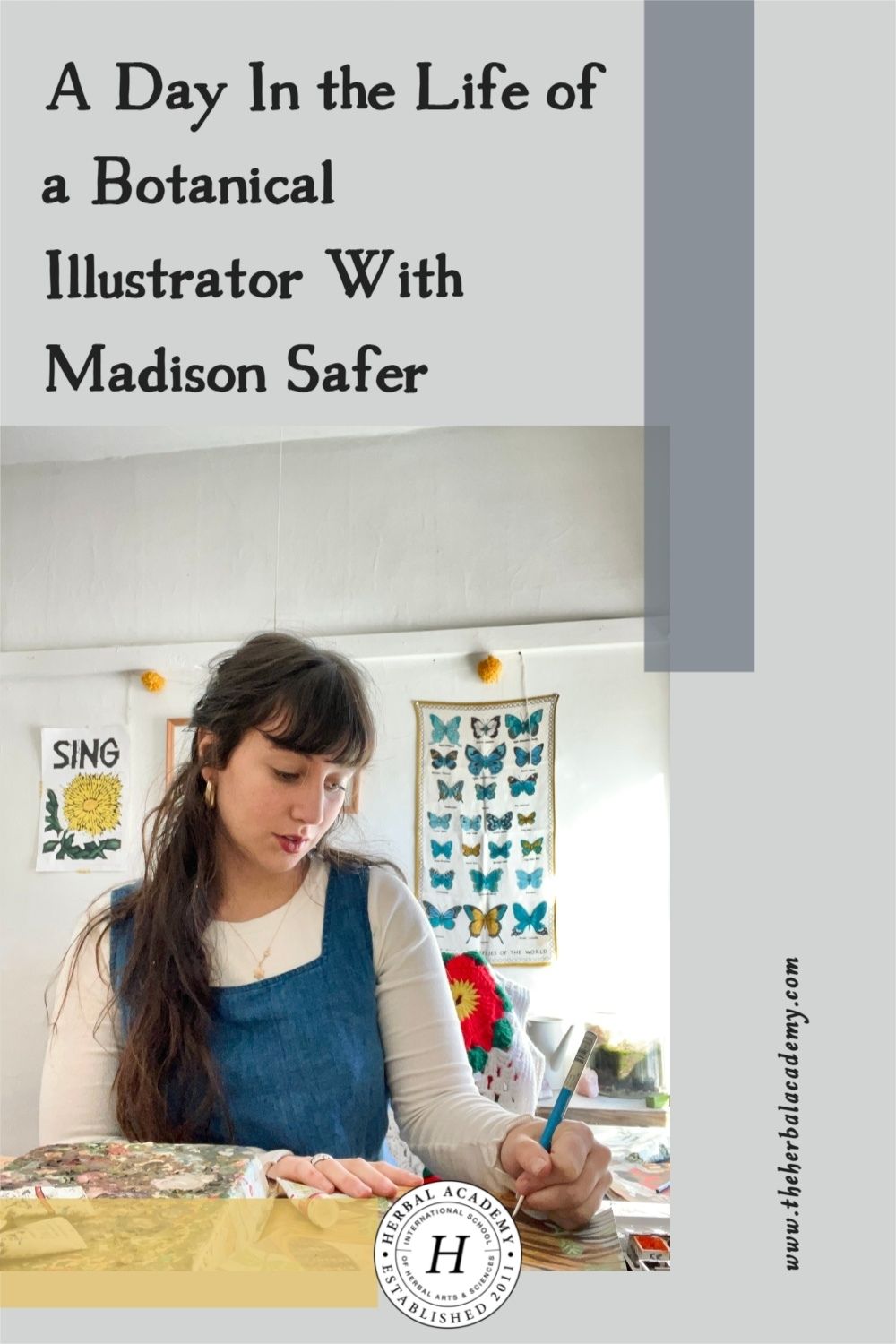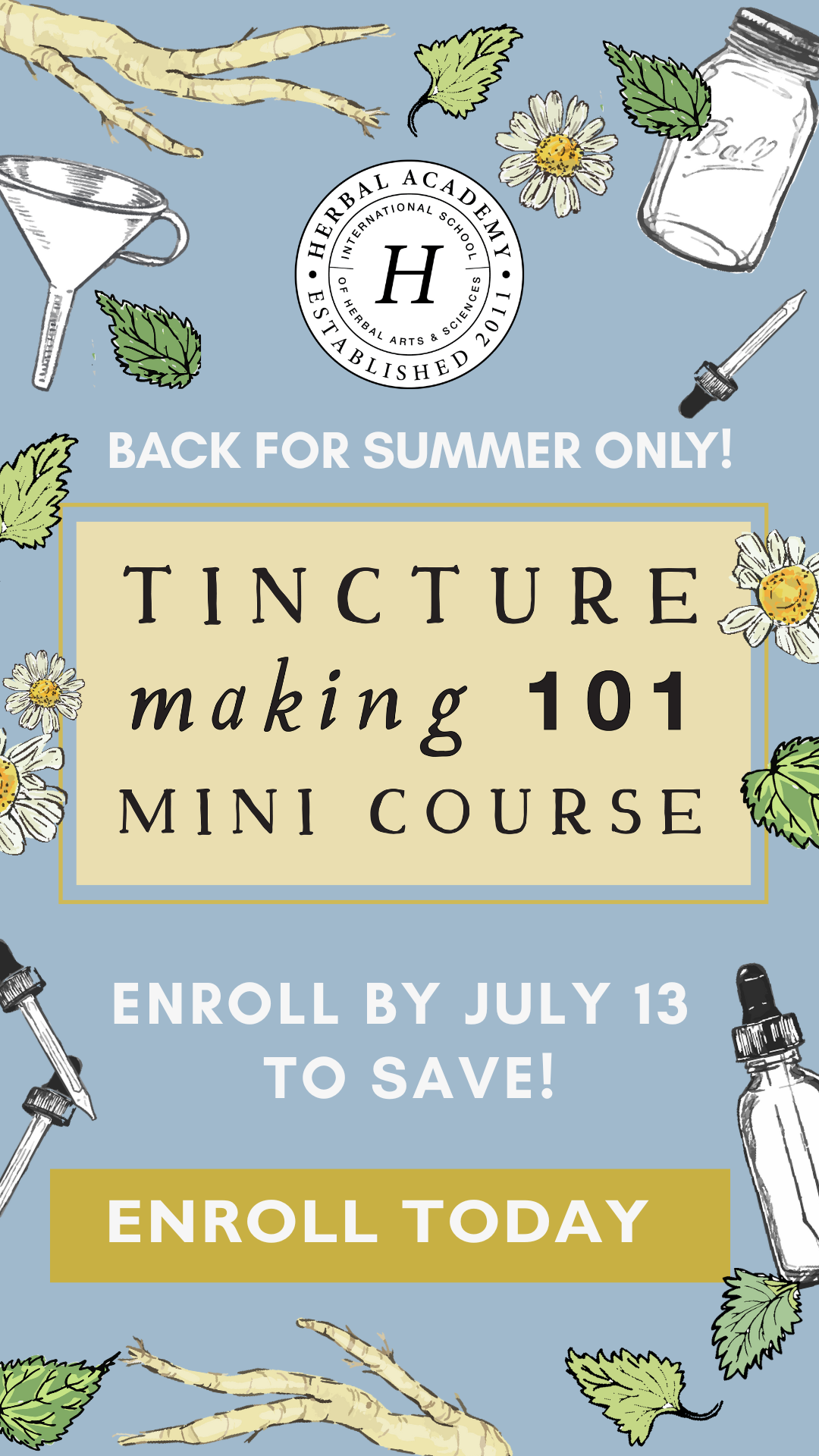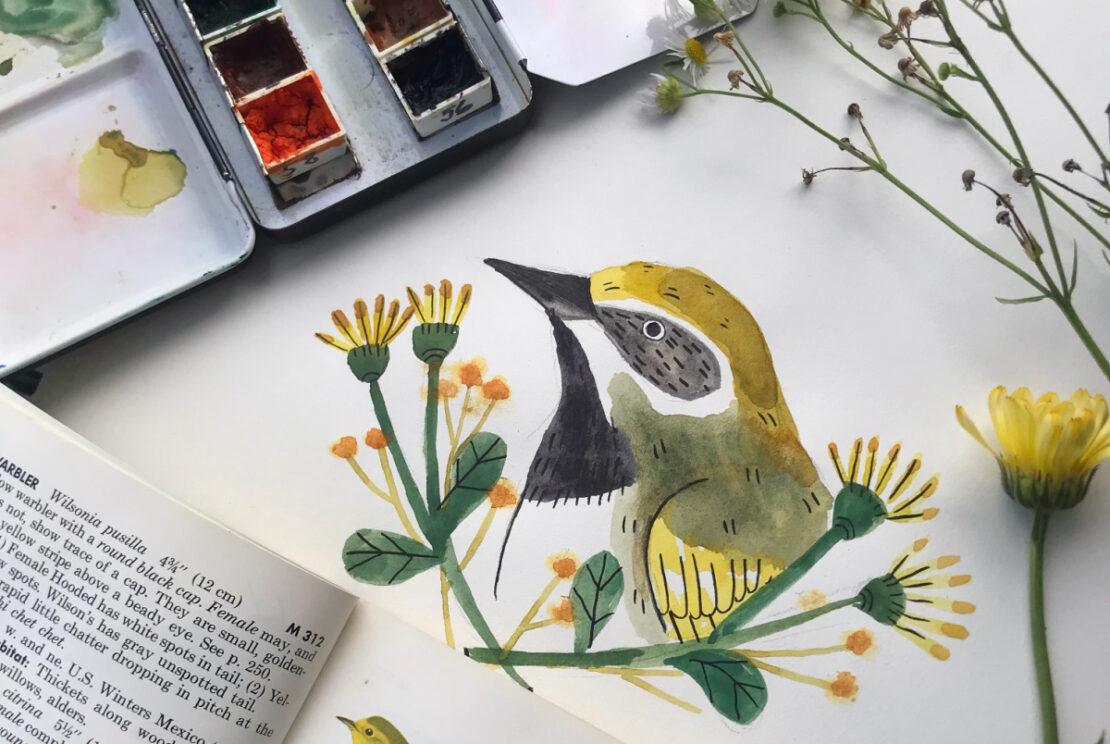
A Day In the Life of a Botanical Illustrator With Madison Safer
Madison Safer is a freelance illustrator who beautifully interweaves her creative artwork with her herbal practice. You may have seen her work in Taproot magazine or on social media, where her cozy, nostalgic designs illustrate topics that are near and dear to naturalists and herbalists of all skill levels. We particularly love her Fire Cider Print, which shows all the ingredients that go into a batch of immune-boosting fire cider, and her colorful Edible Wildflower Print, which features clover, dandelion, violet, and other edible flowers.
In our Botanical Drawing for Herbalists mini course, we feature Madison as a shining example of a botanical illustrator who is able to accurately represent the plants she’s drawing, while also lending her own unique, recognizable style for each design.
Madison has completed a few of our online herbalism courses, including The Mushroom Course, and we’re honored to have had the opportunity to chat with Madison about her creative process, how it’s inspired by herbalism, and her advice for budding botanical illustrators.
Thank you, Madison, for taking the time to share a sneak peek into the life of a botanical illustrator!
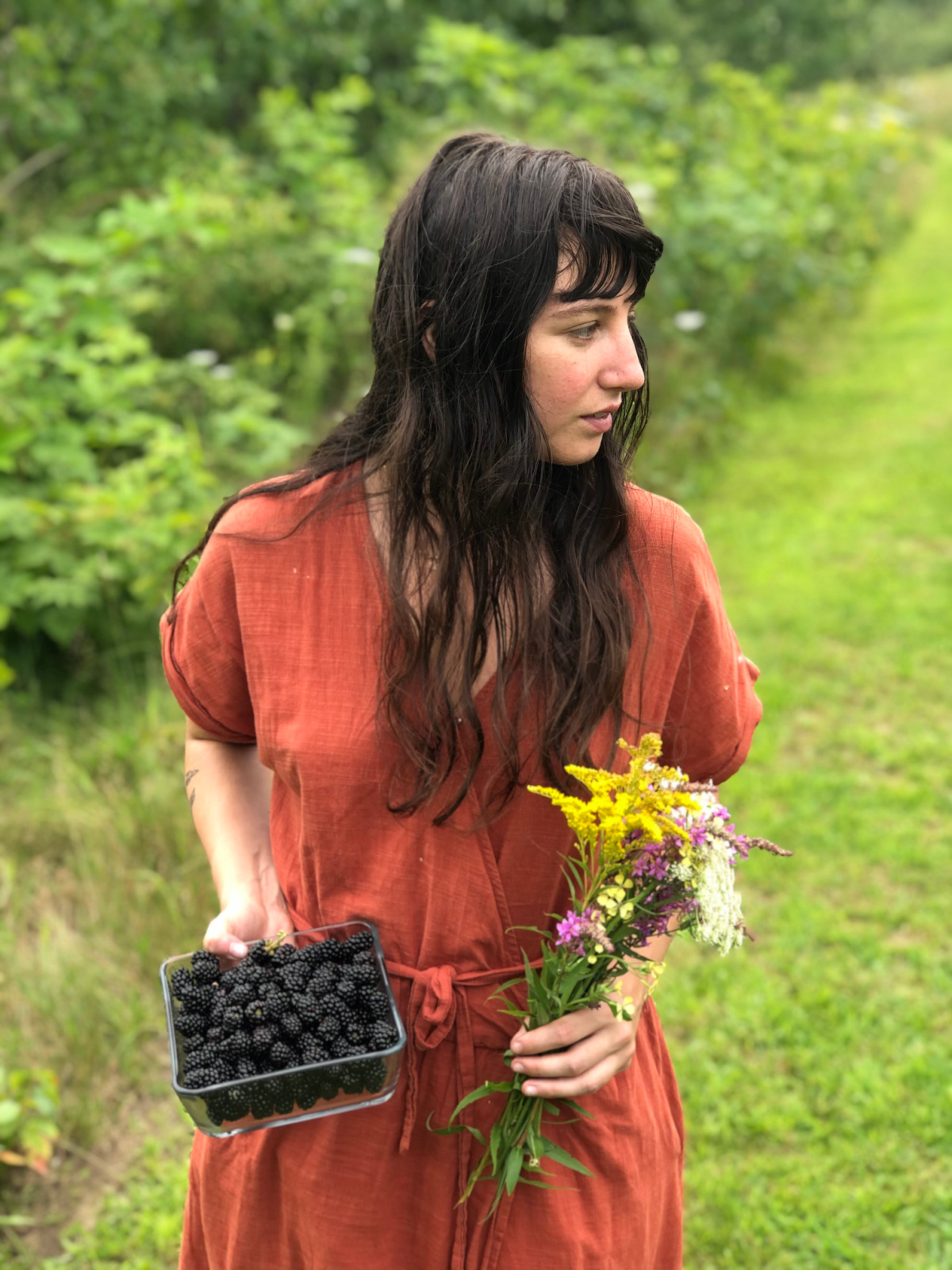
Question: Will you please take a moment to introduce yourself and share a bit about your artwork?
Madison Safer: My name is Madison Safer. I’m an illustrator, and my work centralizes around themes of nostalgia, home, and coziness, and is also influenced a lot by elements of herbalism, natural living, and seasonal living.
I’m really interested in the idea of nostalgia as a relatable feeling no matter what age you are. It’s my hope that when people view my artwork—whether it’s the botanical illustrations or storybook illustrations—they’re able to get that feeling of comfort and nostalgia that they might have experienced as a kid or as their younger self.
Question: How would you describe your artistic style, and has it evolved over time?
Madison Safer: I like to use a variety of different mediums. I usually start with a base of watercolor. There’s a kind of paint called “gouache” that’s a cross between clay pigment and pigment, and that’s what I use for some of the colors. Then I’ll use things like ink, crayon, or colored pencils to fill in some of the texture. Everything is very layered in terms of the medium.
I’m not a folk artist because I do have formal training, but I am very inspired by folk art. I look at a lot of eastern European art and how they’re able to have an objectiveness about the natural world while still keeping things stylized. I try to live in that world of folk-art-inspired while still maintaining a little bit of realism.
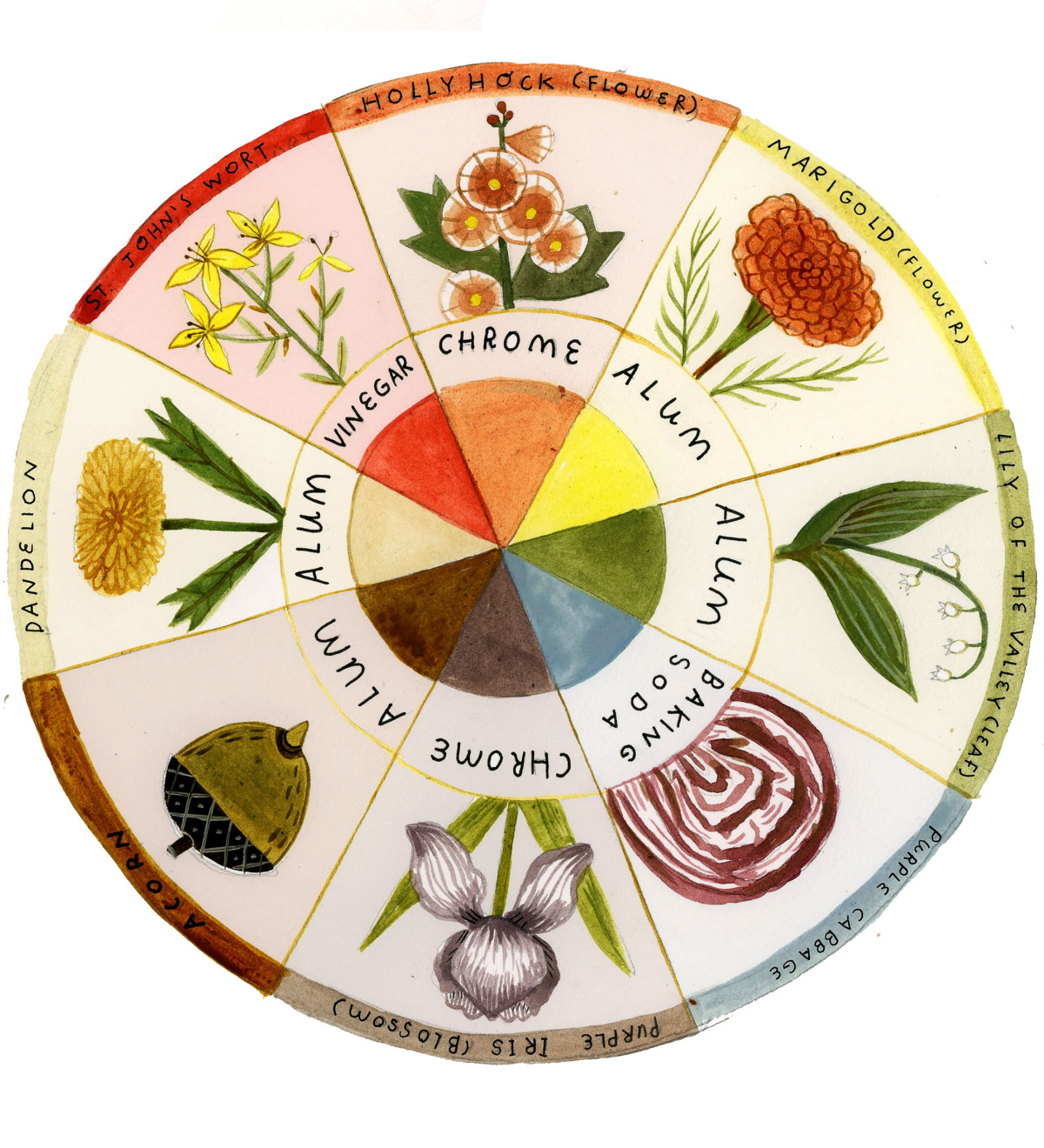
Question: How does herbalism inspire your artwork?
Madison Safer: When I’m planning a new illustration, I first ask myself, “What is seasonally relevant?” For example, if it’s spring and I know wild greens are going to be coming up, then I’ll think of some ways that I want to intentionally engage with them, either through a new recipe or a detail that I want to investigate more than I have in seasons past.
Before I start creating, I always like to have a cup of herbal tea, light some kind of incense, and take some kind of tincture to feel grounded. I like to pick recipes based on the season. So right now, it’s winter and I’m drinking orange, clove, and cinnamon tea. I have a rose tincture that I use often because it’s very fragrant. I’ll put some in my tea, take some orally, and also put some in the paint water. What you’re engaging with physically is also what you’re engaging with on the paper, so it’s nice to bring that tincture into the artwork itself.
For example, this fall, I was able to design some seed packets for Hudson Valley Seed company. The plant was yarrow, and it was blooming during that time, so I was able to go out and pick some of the flowers and leaves and put them in the paint water as well. It was nice to connect the dots between the natural world and the creative, more tangible world in that way, too.
Question: Has your artistic practice helped further your herbal studies?
Madison Safer: Yes, and I’m really interested in art as a means of education. When I originally started painting botanicals, it was a way for me to remember what I was seeing and a way to engage with the seasons. Slowly, I started using it as an educational tool to help me remember recipes or group different natural elements together – like edible mushrooms or conifers of North America.
My herbal-inspired artwork started as a study tool for myself, then I noticed that other people were connecting with it, as well, and were able to use it for their own educational purposes.
A phrase that gets thrown around a lot is that you want to “spend time with the plants.” And sometimes that’s more literal—like if you want to spend time using a plant in different recipes or foraging a plant—and I think another way of honoring that, too, is drawing or painting or creating work about it. Thinking about leaf structure, stem structure, what the flower itself looks like, it’s all a way of committing it to memory. Observation is a great educational tool.
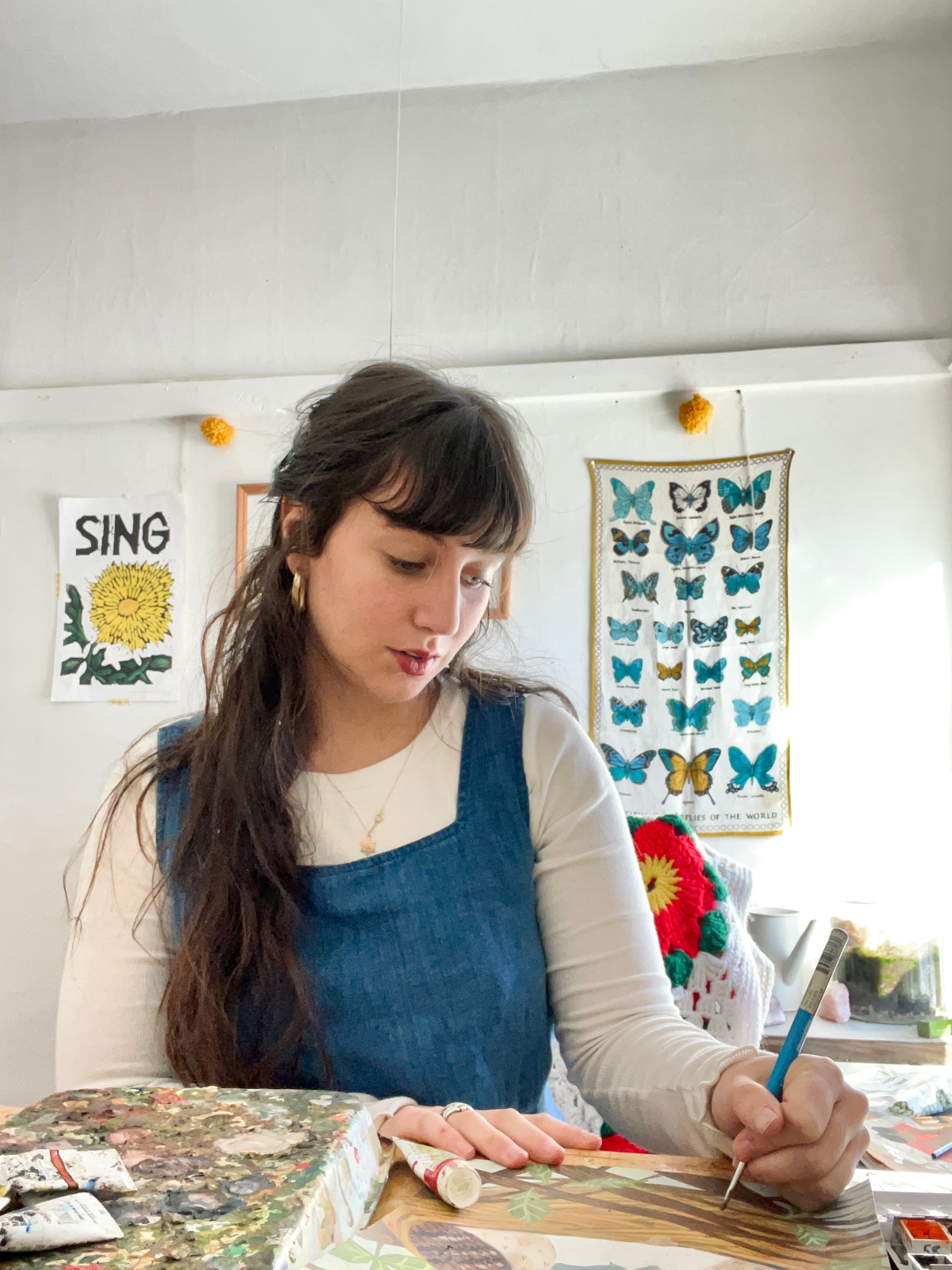
Question: Many of our students are entrepreneurial-minded, and may be curious about how to make a living as a botanical illustrator. Would you mind sharing a bit about how you’re able to accomplish this?
Madison Safer: When you’re a freelance artist, you need multiple streams of income because it’s an ebb and flow. The three main facets of my work are picture books, selling products online (prints, stickers, bookmarks, and different paper goods), and also commissions. During certain parts of the year, if I’m not working on large projects, then I’ll work on logos and product design for herbalists, herbal brands, and entrepreneurs. I have also been working as a librarian for the last four years, and I recently started teaching at a nearby art college. There are a lot of different hats to wear, and it really just depends on the time of year and what’s relevant at that time.
A lot of people want to be 100% freelance, but for me, personally, I need some sort of social interaction and I get a lot of creative rest from having another job. I really like being in an educational role because it gives me time to reset and see what other people, including my students, are excited about.
Question: What is a typical workday like for you?
Madison Safer: When you’re freelancing, your daily structure is often based on where your deadlines are at. Typically, I like to wake up early and walk my dog to get out of the house and clear my mind. When you work at home like I do, having that space between is really important to feel like you’re coming into your job.
Like any freelance job, there are a lot of different hats to wear. I try to get a lot of the emails and office work out of the way first thing so that when I sit down and I’m working on my [art] practice I’m able to really focus and not have the generator running in the background of all these things that need to be taken care of on the computer. That usually takes the first few hours of the day, doing things like printing posters, going to the post office, etc., and that usually goes until about 1 or 2 p.m.
The rest of the afternoon, I try to find a way to settle into the different space. I try to focus on the painting element of things. I tend to work best in a couple of hour increments, so I’ll typically paint for at least 3 hours a day.
Then, when I have time, I try to find time to do personal work as well. Every Friday, there’s a cafe near us that my partner and I go to for a few hours. When we’re there, I try to only draw for fun; I don’t bring my laptop, and I try to use that time to engage with the work that’s purely enjoyable. When you’re working a job that’s your passion, it can be hard sometimes to remember that it’s a job you have because you love what you do. Taking time to remember why you engage with it—and why you’re passionate about it—really helps keep things fresh.
I have also learned that it’s important to have interests that are creative, like embroidering cross-stitch, as a way of working your creative muscles while still having a second place to go to where you can say “this is not work – this is something separate.” For me, herbalism has also been that, and I think of herbalism as a very creative process. It’s something that has a very objective, scientific side and there’s also a very intuitive side of things—and in a lot of ways, painting is the same way. So both of them have really informed how to look at one another.
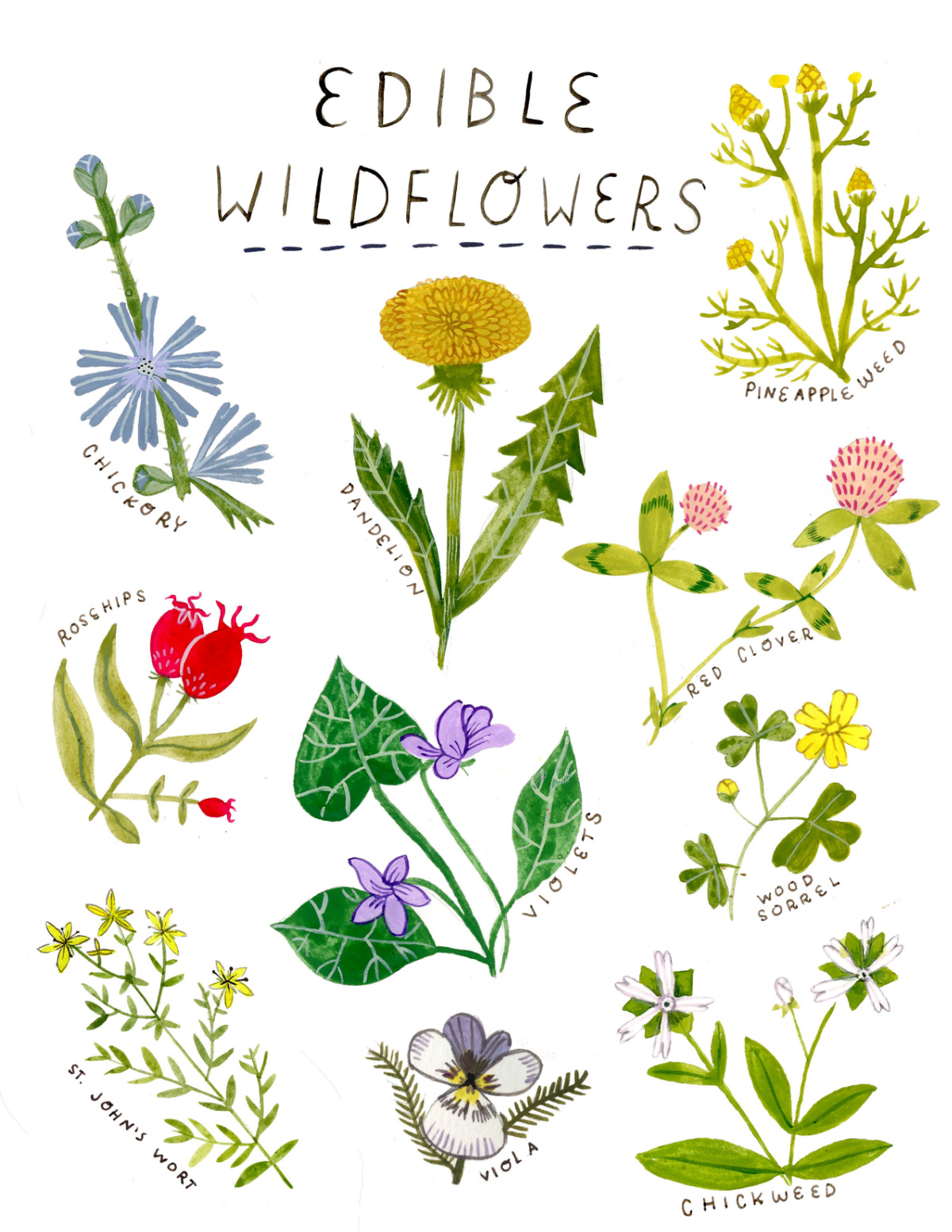
Question: What excites you most about your work?
Madison Safer: I really like the process of synthesis. What’s exciting for me about the botanical work that I do is how you’re able to look at something and then process it through your creativity, your stylist decisions, and your medium and then it comes out not as a replication of what you’re seeing, but a reflection.
For me, I find it very thrilling to see the differences in how it may look realistically in the natural world vs. how it comes across on paper.
It doesn’t have to be perfect, and in a lot of ways, painting becomes a kind of symbol. If things aren’t perfect, they’re still recognizable. I really like the process of how your creativity can transform a plant or object into what you see in your mind’s eye.
It can be easy to get frustrated when something isn’t completely identical to what you’re trying to create. I’ve learned that if you’re working on a painting and getting frustrated, then you can turn it over (if it’s dry), walk away for an hour, and then come back. A lot of times—especially when you’re working with botanicals—when you come back and you’re not looking at the reference, you realize that it’s still very recognizable. You’re seeing it the way you’re feeling it, and there’s something really special about that.
I’ve never been a hyper-realistic painter, and that’s not where I’ve found my happiness creatively, but I think there was that push-and-pull for a long time of wanting things to align more identically. But that’s where looking at folk art has been really healing for that perfectionist side of myself. I appreciate seeing the ways that people who are untrained—or who learned from each other—are able to express different parts of the natural world without needing to dote over every detail. And [the end result is] still something very beautiful and relatable.
The way you see a plant may be different than the way I see a plant. What excites you, may be different than what excites me.
Seeing what other people and my students focus on, is really fun. It’s interesting to see what is exciting about a plant through other peoples’ perspectives based on what they spend the most time rendering or focusing on or looking at the colors or the shapes.
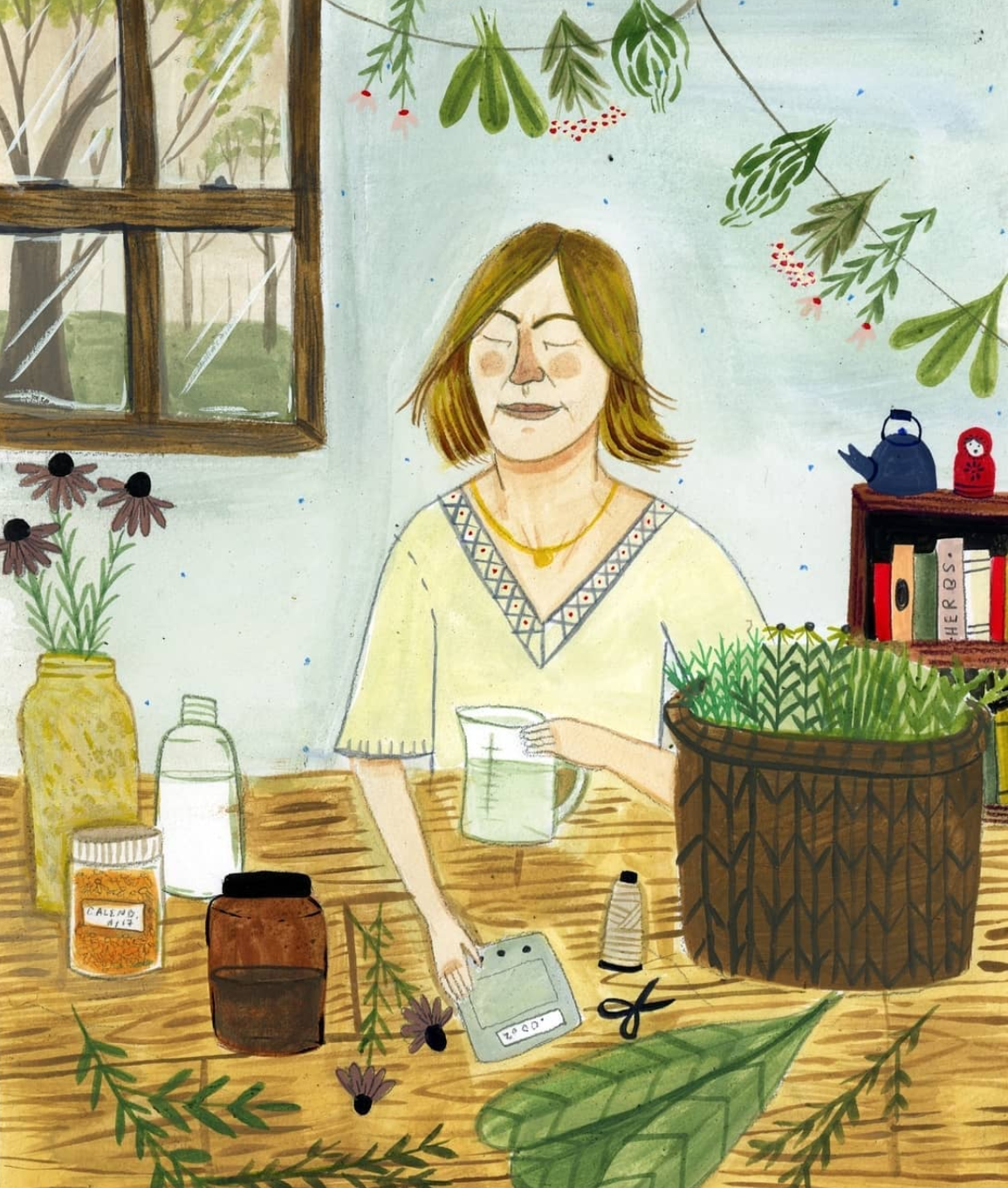
Question: What advice would you give to someone who wants to work toward becoming a professional illustrator?
Madison Safer: You hear a lot about making time for your practice, and I think it’s a cliche for a reason. Treating art like it’s a relationship in your life, and showing up and making time and caring for it, is an effective way of thinking about it as both a creative outlet and potentially also a career. I was fortunate enough to go to school for illustration, and that taught me a lot about what it means to show up creatively every day. With that being said, remember that people aren’t art factories, and showing up looks different on different days. Maybe it’s focusing more on the herbalism side of things one day and then focusing more on the drawing side of things another day.
A book that I read when I first became more serious about freelancing was How to Not Always be Working by Marlee Grace, and it’s a workbook about how to balance the creative side of yourself. There’s also a book called How to Do Nothing by Jenny Odell that’s about the attention economy and how to balance the creative part of yourself and the work part of yourself. For people who struggle with perfectionism and working all the time—but don’t know where to start breaking those habits—I would definitely recommend those two books.
Question: Do you have a favorite herb that you really resonate with?
Madison Safer: It changes seasonally, but there are certain herbs that I do come back to all the time. A lot of time, for me, it’s herbs that I grew up with, like chamomile (Matricaria chamomilla) and lavender (Lavandula spp.) that are both so nostalgic.
Right now, I’ve been working a lot with nettle (Urtica dioica) for immune support. There’s something about the transition around the colder seasons that makes me want to have something that feels very earthy and grounding. Nettle is something that I always come back to as a very comforting plant and it has been a consistent ally in my life. I use nettle in broth and tea a lot. I’ve never made pesto out of it, but that’s something I’d love to try!
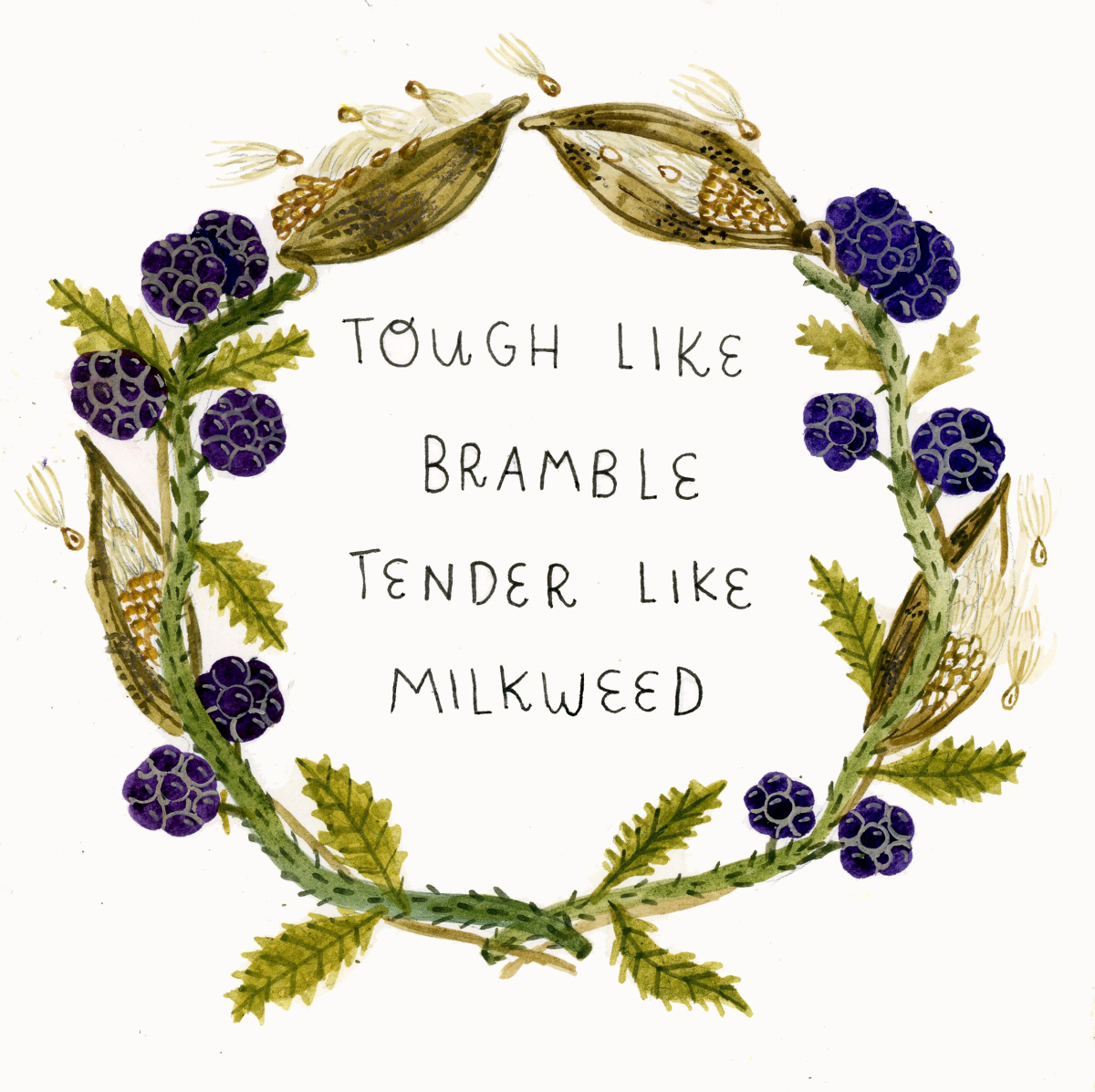
Question: How does herbalism appear most in your daily life?
Madison Safer: For a lot of herbalists and plant enthusiasts, herbalism can touch many different facets of your life. There’s the spiritual quality and the medicinal quality, and a huge range in between. I use herbalism a lot as a way to connect with the seasons and as a grounding practice. Immune support may not be seen as a spiritual practice necessarily, but it’s a way of engaging with the season and honoring the plants of the season.
I think herbalism is something you can use both as a remedy and as a way of grounding yourself throughout the day and connecting more with the natural world. I’m constantly trying to find the bridge between both of those things, asking myself how are plants healing on the physical level and also the spiritual level?
Question: What’s next for you, what are you looking forward to in 2022 and beyond?
Madison Safer: My debut children’s book will be coming out in March 2022! I just illustrated it, I didn’t also write it, and it’s called Before Music. It’s about the natural origins of instruments, and it takes a look at how we’re able to take found objects, like mud or wood, and transform them from raw material to an instrument. It’s very interesting – the author did a fabulous job of explaining things on a very understandable level. Part of it is narrative, and another part of it is almost like an encyclopedia of natural instruments.
I’m illustrating another book, which is currently in progress, about how we’re able to make natural pigments. So we’ll look at something, like a yellow shirt, and how different plants and natural elements are here to help us create the pigments that color the shirt. It’s going to be a great children’s book, but even as an adult working on the illustrations, I learned so much that I didn’t know. I think it will be great for people of all ages!
I am also excited to be making a bit more personal art this year and taking a bit of a step back from the more rigorous work. This year, I’m looking forward to more creative play.
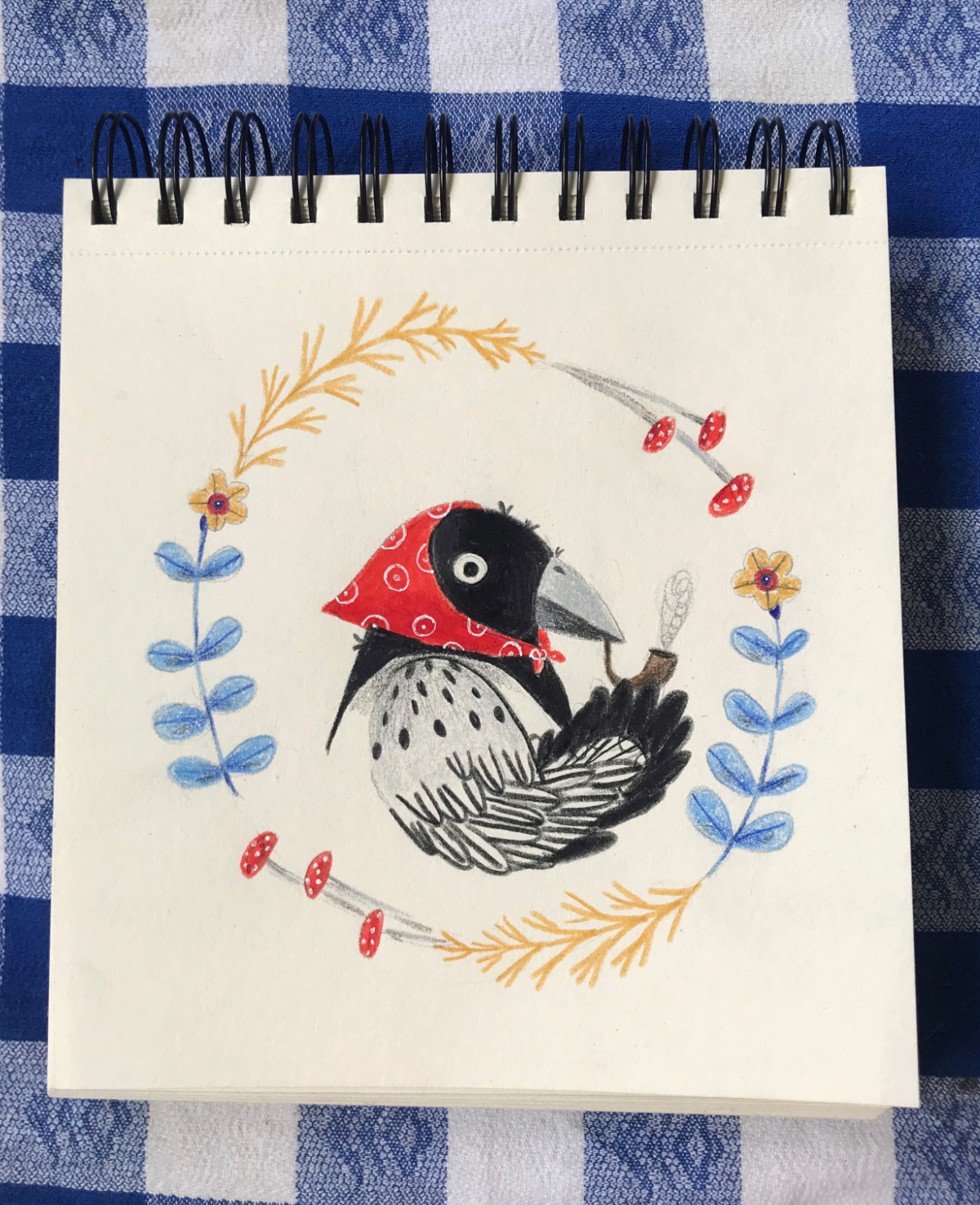
Question: Thank you so much for taking the time to chat with us! Before we sign off, where can our students and friends connect with you?
Madison Safer: My website is www.Madisonsafer.com. For social media, I’m mostly on Instagram @madison.safer. You can also find my work in many issues of Taproot magazine and also on select Hudson Valley Seed Company’s seed packets.
